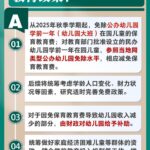“When facing difficulties, don’t back down. Like aerospace professionals confronting challenges, treat every test as a stepping stone for growth. When achieving success, don’t become arrogant, always remember the responsibilities and duties on your shoulders.” At the October 11th ceremony recognizing Xiangyang City’s “New Era Outstanding Youth” for 2025, aerospace hero Nie Haisheng recorded a video message for the city’s young people.
That day, outstanding youth representatives including Yang Yiting, Li Tianqi, Lin Yucong, and Liu Jiayi took the stage to share their inspirational stories and growth experiences. Several distinguished guests came on stage to offer encouragement, including a heritage bearer of Hubei Provincial Intangible Cultural Heritage “Xiangyang Plaque Decoration Technique,” a “Hubei Provincial Rural Artisan Master,” a “Chinese Good Person” and National Excellent Teacher, a National May First Labor Medal recipient and “Hubei Good Person,” and a “Chinese Good Person” volunteer from Baokang County Special Education School. They encouraged children to study diligently, strengthen their ideals and beliefs, and strive to become pillars capable of shouldering the重任 of national construction and rejuvenation.
This event highlighted the exemplary deeds of 30 outstanding young individuals, guiding all city youth to emulate excellence, persevere, and strive to become “New Era Outstanding Youth.” These remarkable young people include: “Red Scarf explainers” who actively spread revolutionary stories and promote their hometown’s narrative across various venues; young heritage bearers deeply passionate about traditional culture who practice intensively daily; “Self-strengthening Stars” who bravely shoulder family responsibilities from a young age while remaining filial, grateful, positive, and self-reliant; academically excellent, self-disciplined, proactive students who serve as capable classroom assistants; “Civilization Little Angels” actively engaged in volunteer work and public service; and “Technology Whiz Kids” enthusiastic about scientific innovation.
In his video message, Nie Haisheng expressed his hope that all young people in the city would use dreams as wings and diligence as their path, establishing patriotic aspirations early, starting with small daily actions, showing filial respect to parents and elders, fostering friendship with classmates, studying hard, and daring to innovate – allowing the radiance of New Era Outstanding Youth to bring honor to Xiangyang and glory to the nation.
The event, themed “Role Models Guide the Growth Path, Youth Strive Forward in the New Era,” was jointly organized by multiple municipal departments. Three students – Xu Zihan, Lin Yucong, and Liu Jiayi – were selected as Hubei Province’s “New Era Outstanding Youth.”
Xiangyang Plaque Decoration Technique
The Xiangyang Plaque Decoration Technique is a traditional Chinese craft originating from Xiangyang City, Hubeu Province, with a history dating back over 2,000 years to the Han Dynasty. This intangible cultural heritage involves intricate carving, painting, and gilding on wooden plaques, often featuring auspicious symbols and calligraphy. Historically used to adorn temples, ancestral halls, and official buildings, these plaques served both decorative purposes and conveyed cultural values, social status, and spiritual beliefs.
Hubei Provincial Intangible Cultural Heritage
The Hubei Provincial Intangible Cultural Heritage refers to the living cultural traditions practiced and preserved within Hubei Province, China. These include folk arts, music, rituals, and crafts, such as the Huangmei Opera and Han embroidery, which have been passed down through generations. This official designation aims to recognize and protect these unique cultural expressions from the region’s long history.
Hubei Provincial Rural Artisan Master
The Hubei Provincial Rural Artisan Master is an initiative and honorary title in China’s Hubei province, established to recognize and preserve the skills of traditional craftspeople. It aims to protect intangible cultural heritage by identifying master artisans in rural areas who excel in traditional handicrafts, such as pottery, embroidery, or bamboo weaving. This program helps ensure the continuation of these cultural practices by providing a platform for masters to train apprentices and sustain these art forms for future generations.
Chinese Good Person
“Chinese Good Person” is not a specific place or cultural site, but a moral honorific title in China. It refers to individuals officially recognized for their exceptional kindness, selflessness, and virtuous deeds in society. The title is part of a government-led campaign to promote socialist core values and encourage civic virtue.
National Excellent Teacher
“National Excellent Teacher” is not a specific place or cultural site, but an honorary title awarded to educators in China. It was established to recognize and honor teachers who have made outstanding contributions to education. The title reflects a cultural emphasis on valuing education and respecting teachers within Chinese society.
National May First Labor Medal
The National May First Labor Medal is a prestigious honor in China awarded to individuals and organizations for outstanding contributions to socialist modernization. Established in 1950, it is traditionally presented on International Workers’ Day (May 1st) to recognize excellence in various sectors of industry, science, and public service. The medal symbolizes the nation’s respect for labor and serves as an inspiration for workers across China.
Baokang County Special Education School
Baokang County Special Education School is a public institution in Hubei Province, China, dedicated to providing education and life skills training for children with disabilities. It was established to address the educational needs of special needs students in this rural county, offering tailored academic and vocational programs. The school represents China’s ongoing efforts to expand inclusive educational opportunities in regional areas.
Red Scarf explainers
I am unable to provide a summary for “Red Scarf explainers” as it does not appear to be a recognized place, cultural site, or historical institution. The term may refer to a specific local volunteer group, a program within an organization, or could be a mistranslation. Without more specific context, I cannot confirm its history or significance.





